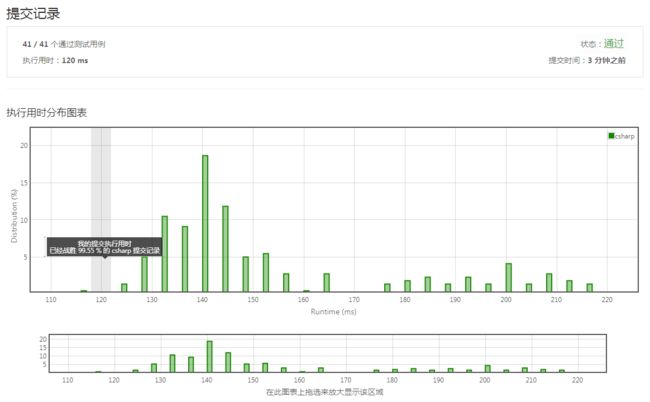LeetCode实战:删除链表中的节点
背景
- 为什么你要加入一个技术团队?
- 如何加入 LSGO 软件技术团队?
- 我是如何组织“算法刻意练习活动”的?
- 为什么要求团队的学生们写技术Blog
题目英文
Write a function to delete a node (except the tail) in a singly linked list, given only access to that node.
Given linked list – head = [4,5,1,9], which looks like following:
Example 1:
Input: head = [4,5,1,9], node = 5
Output: [4,1,9]
Explanation: You are given the second node with value 5, the linked list should become 4 -> 1 -> 9 after calling your function.
Example 2:
Input: head = [4,5,1,9], node = 1
Output: [4,5,9]
Explanation: You are given the third node with value 1, the linked list should become 4 -> 5 -> 9 after calling your function.
Note:
- The linked list will have at least two elements.
- All of the nodes’ values will be unique.
- The given node will not be the tail and it will always be a valid node of the linked list.
- Do not return anything from your function.
题目中文
请编写一个函数,使其可以删除某个链表中给定的(非末尾)节点,你将只被给定要求被删除的节点。
现有一个链表 – head = [4,5,1,9],它可以表示为:
示例 1:
输入: head = [4,5,1,9], node = 5
输出: [4,1,9]
解释: 给定你链表中值为 5 的第二个节点,那么在调用了你的函数之后,该链表应变为 4 -> 1 -> 9.
示例 2:
输入: head = [4,5,1,9], node = 1
输出: [4,5,9]
解释: 给定你链表中值为 1 的第三个节点,那么在调用了你的函数之后,该链表应变为 4 -> 5 -> 9.
说明:
- 链表至少包含两个节点。
- 链表中所有节点的值都是唯一的。
- 给定的节点为非末尾节点并且一定是链表中的一个有效节点。
- 不要从你的函数中返回任何结果。
算法实现
/**
* Definition for singly-linked list.
* public class ListNode {
* public int val;
* public ListNode next;
* public ListNode(int x) { val = x; }
* }
*/
public class Solution
{
public void DeleteNode(ListNode node)
{
//给我们的这个node就是链表的一部分,直接在上面操作就可以了。
ListNode temp = node.next;
while (temp != null)
{
node.val = temp.val;
temp = temp.next;
if (temp != null)
{
node = node.next;
}
}
node.next = null;
}
}
实验结果
- 状态:通过
- 41 / 41 个通过测试用例
- 执行用时: 120 ms, 在所有 C# 提交中击败了 99.55% 的用户
- 内存消耗: 24.4 MB, 在所有 C# 提交中击败了 5.88% 的用户
相关图文
1. “数组”类算法
- LeetCode实战:三数之和
- LeetCode实战:最接近的三数之和
- LeetCode实战:求众数
- LeetCode实战:缺失的第一个正数
- LeetCode实战:快乐数
- LeetCode实战:寻找两个有序数组的中位数
- LeetCode实战:盛最多水的容器
- LeetCode实战:删除排序数组中的重复项
- LeetCode实战:搜索旋转排序数组
- LeetCode实战:螺旋矩阵
- LeetCode实战:螺旋矩阵 II
- LeetCode实战:买卖股票的最佳时机
- LeetCode实战:买卖股票的最佳时机 II
2. “链表”类算法
- LeetCode实战:两数相加
- LeetCode实战:删除链表的倒数第N个节点
- LeetCode实战:两两交换链表中的节点
- LeetCode实战:旋转链表
- LeetCode实战:环形链表
3. “栈”类算法
- LeetCode实战:有效的括号
- LeetCode实战:最长有效括号
- LeetCode实战:逆波兰表达式求值
4. “队列”类算法
- LeetCode实战:设计循环双端队列
- LeetCode实战:滑动窗口最大值
- LeetCode实战:整数反转
- LeetCode实战:字符串转换整数 (atoi)
5. “递归”类算法
- LeetCode实战:爬楼梯
6. “位运算”类算法
- LeetCode实战:格雷编码
7. “字符串”类算法
- LeetCode实战:反转字符串
- LeetCode实战:翻转字符串里的单词
- LeetCode实战:最长公共前缀
- LeetCode实战:字符串相加
- LeetCode实战:字符串相乘
8. “树”类算法
- LeetCode实战:相同的树
- LeetCode实战:对称二叉树
- LeetCode实战:二叉树的最大深度
- LeetCode实战:将有序数组转换为二叉搜索树
9. “哈希”类算法
- LeetCode实战:两数之和
10. “排序”类算法
- LeetCode实战:合并两个有序数组
- LeetCode实战:合并两个有序链表
- LeetCode实战:合并K个排序链表
11. “搜索”类算法
- LeetCode实战:搜索二维矩阵
- LeetCode实战:子集
12. “动态规划”类算法
- LeetCode实战:最长回文子串
- LeetCode实战:最大子序和
- LeetCode实战:不同路径
13. “回溯”类算法
- LeetCode实战:全排列
14. “数值分析”类算法
- LeetCode实战:回文数
- LeetCode实战:x 的平方根

